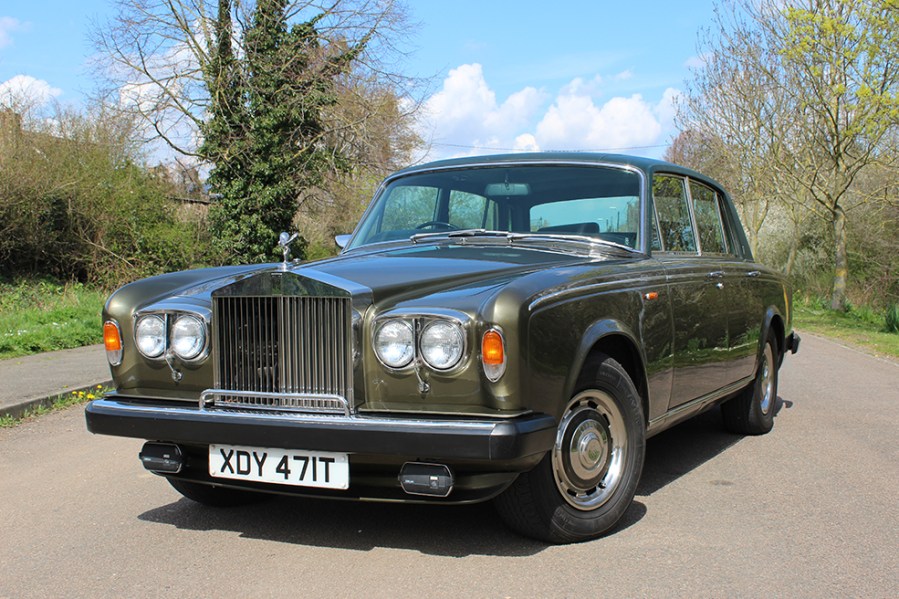British-built luxury saloons had reached their zenith by the dawn of the 1970s. Here are our favourite 1960s luxury saloons
Words: Iain Wakefield
Rolls-Royce Silver Shadow
The covers came off the original 6.2-litre V8-powered Rolls-Royce Silver Shadow at the 1965 Paris Motor Show and as well-being the first Rolls-Royce to utilise a unitary constructed bodyshell, the Silver Shadow featured a Citroën inspired hydraulic self-levelling suspension system that also provided the power for the braking system.
In 1968 the Silver Shadow’s auto gearbox was uprated to a GM400 unit and the next major upgrade took place in 1970 when the capacity of the V8 engine was increased from 6230cc to 6750cc. A series of modifications two years later helped address poor directional stability issues and in 1977 the heavily revised Series II Silver Shadow was introduced equipped with rack and pinion steering and heavy energy-absorbing rubber faced bumpers.
The badge-engineered Bentley T-Series models were also upgraded in line with their flying lady adorned stable mates and today these very similar looking luxury saloons offer an interesting alternative to a Silver Shadow.
It goes without saying that a neglected Silver Shadow or T-Series Bentley will rack up wallet-busting bills in a very short time. However, choose wisely and there’s nothing to beat that feeling of cruising around the countryside in a luxury motor once described in the sales brochure as ‘the best car in the world’.
Corrosion will eventually attack the Silver Shadow and T-Series Bentley in all the usual areas such as around all the wheelarches, top and bottom of the front wings, around the headlamps, along the bottom of all the doors, inner and outer sills, floorpans, lower rear wings, boot floor and the front and rear valances. Provided it’s been serviced properly, the engine and later GM400 transmission is usually trouble free but one area that can be problematic and expensive to fix is the Shadow’s complex hydraulic system.

Rover P5/P5B
Originally introduced as the Rover 3 Litre, this big saloon was originally powered by a 2995cc straight six. Early versions were fitted with front drum brakes, but these were quickly uprated to more powerful discs. Rover introduced the revised MkIA in late 1961 and the revamped MkII followed a year later. Power for the new big Rover was now up from a previous 115bhp to a very useful 134bhp on manual versions (overdrive and auto were optional
extras). The MkII was also produced as an attractive four-door coupé, which were all equipped with power steering. A MkIII version appeared in 1965 and revisions to the MkIII’s interior included adding more comfortable reclining front seats and individual sculptured chairs for rear seat passengers. In 1967 Rover introduced the game changing P5B powered by a lightweight 3528cc V8. This was the first Rover-badged car to use the ex-Buick engine and when pushed, this 144bhp power plant could accelerate the heavy P5B up to an impressive fuel gulping top speed of 108mph. All P5B’s where fitted with automatic transmission, power steering and stylish RoStyle wheels.
The final big Rover before the modular constructed P6 arrived on the scene. Although the later V8 powered P5B tends to be the popular choice, earlier models offer a huge amount of comfort and represent good value for money. Coupé’s still look stylish and saloons were once the favoured transport of Royalty and government ministers.
Rust attacks these cars in all the usual places and serious corrosion will be very expensive to put right. While spares for early models fitted with the straight six engines are difficult to find, specialist suppliers are able to provide a multitude of parts for the V8 powered P5B. When buying, ensure the interior is complete and in good order as reviving a shabby interior will be an expensive business.
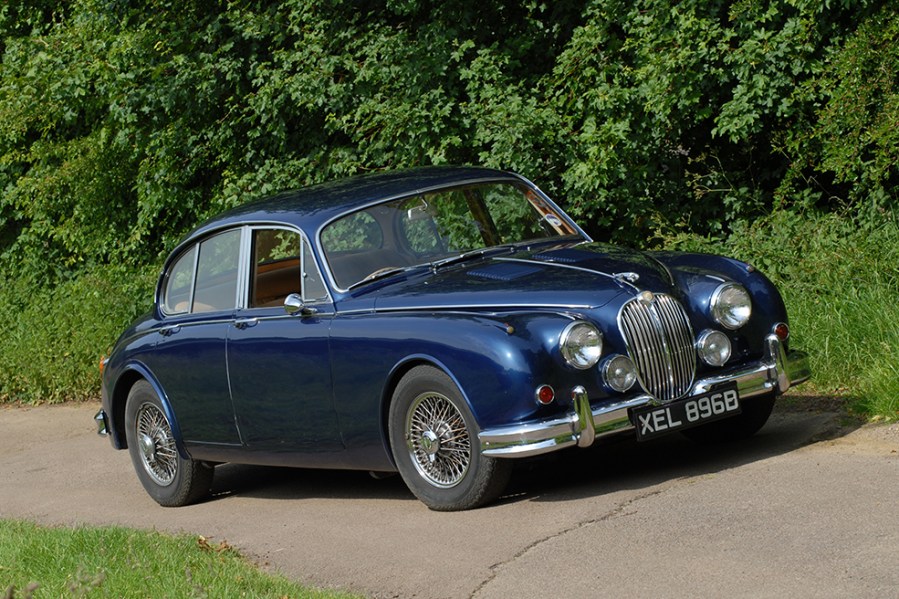
Jaguar Mk2
When compared alongside the outgoing model, the 1959 introduced Mk2 saloon featured a much larger area of glass due to improved monocoque manufacturing procedures. A wider radiator shell and a pair of sidelights repositioned on top of the wings graced the front of the revised model and the restyled bodywork encompassed a slightly wider rear track. Disc brakes occupied all four corners and the new Jaguar also received a modified front suspension set up. Inside the car, veneered picnic tables graced the rear of the front seats and a revised dashboard layout incorporating the most important dials directly in front of the driver.
Power steering was fitted as standard to the now very desirable 3.8 from 1960 onwards and the car’s notoriously clunky Moss four-speed manual gearbox was replaced with an all-synchromesh affair in 1965. Two years later the downgraded Jaguar 240 and 340 models took over from where the Mk2 left off and these revised models are easily identified by having narrower chrome bumpers and cost cutting Ambla upholstery. The final Jaguar 340 rolled off the assembly line in 1968, the year the advanced XJ6 saloon was unveiled. Production of the Jaguar 240 soldiered on until 1969 and the hugely underrated Daimler V8-powered 250 remained available until the following year.
Instantly recognisable as one of the most iconic Jaguar saloons ever built. Marque enthusiasts will always claim a 3.8-powered manual MkII to the best of the bunch, especially the more desirable examples modified by John Coombs. The more affordale 240 and 340 will still attract admiring glances, as will an S-Type.
When it comes to what goes wrong with a Mk2, rust and a poorly carried out restoration are the main points to watch out for. Chasing rust out of one of these cars can be an expensive business, as can restoring a tatty interior. A smoking or overheating XK six-cylinder engine will be expensive to rebuild, as will refurbishing the silky smooth 2548cc V8 fitted to the Daimler 250.
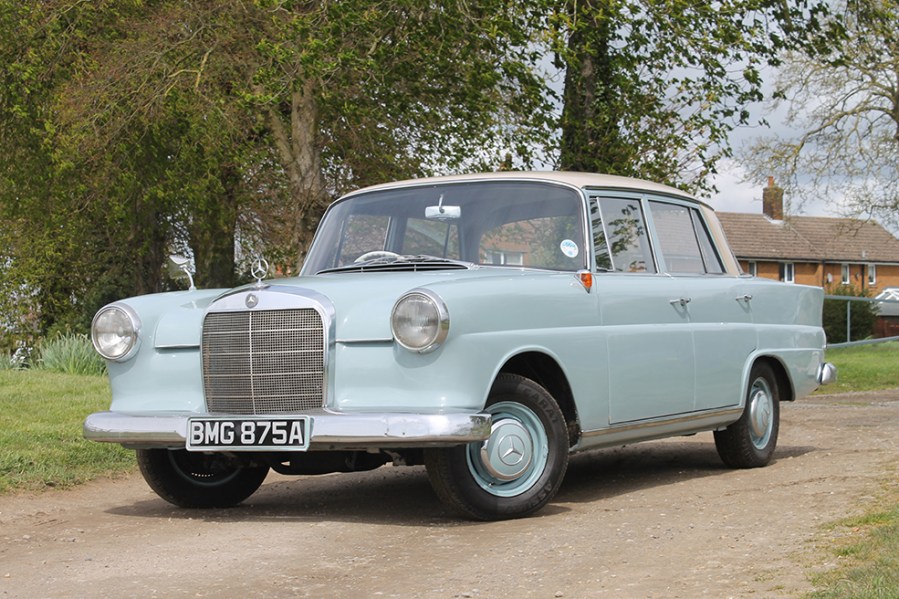
Mercedes-Benz W110/W112
Introduced in 1959, the W110 saloon was more commonly known as the Heckflosse or Fintail for obvious reasons to anyone looking at the car’s profile. A ground-breaking design that included energy absorbing front and rear crash zones to increase passenger safety, the fintail’s cabin also featured a large amount of glass to improve the driver’s visibility. The W110’s modern body style had been heavily influenced by American automotive design and was originally available powered by either a 1.9 litre petrol engine or a 2.0 litre diesel. The straight six powered 2.2 litre 220, 220S and 220SE Fintails replaced the six-cylinder Ponton models and in 1961 Mercedes-Benz introduced an automatic gearbox as an option across the range. The same year saw the introduction of the W112 300SE powered by a 3.0 litre fuel injected straight six. These range topping models featured luxuries such as power steering, wood and leather trim, added exterior chrome and air suspension. Body variants across the range included a four-door saloon, two-door coupe and cabriolet.
There’s always a decent selection of left-hand drive Fintails to choose from and properly maintained, these superbly engineered cars are generally long lived and reasonably trouble free. The one to buy from an enthusiasts’ point of view due to the easy way it drives has to be the 230S. Cabriolets turn heads but are expensive.
Although well made, these cars will still rust, and all the usual checks should be made to the bodywork. Providing the engine has been serviced regularly, both the four- and six-cylinder units are virtually indestructible. Despite the luxury badge, interiors are relatively plain, although the MB-Tex leather like material fitted to some cars is very hard wearing.
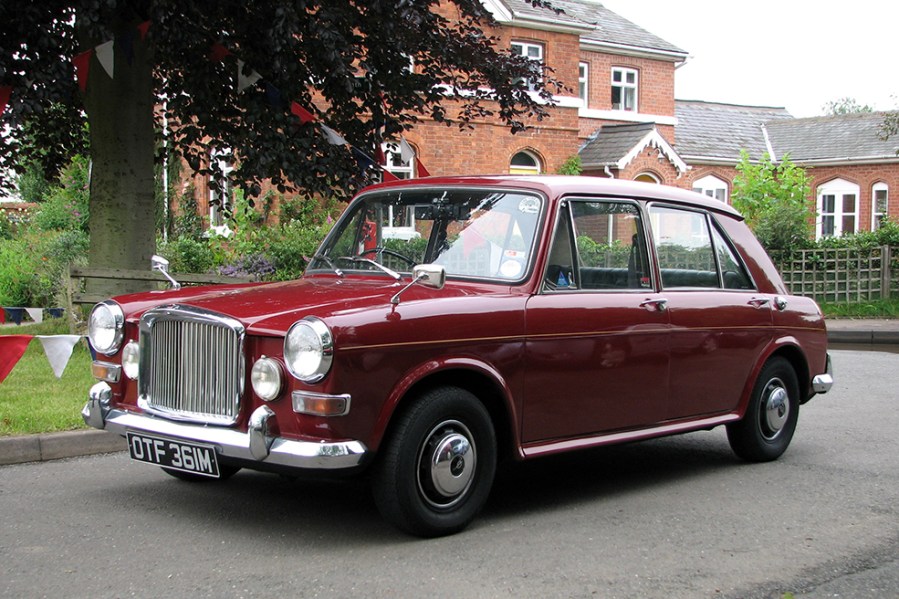
Vanden Plas Princess
The first generation of the luxurious Vanden Plas Princess arrived on the scene in 1959 and was based on an Austin Westminster dressed up with extra wood, leather and more sound deadening material spread around its expansive cabin. A 2912cc straight-six similar to the one found in the Austin A99 drove the Princess’ rear wheels through a four-speed gearbox and the revised Mk2 received the upgraded high lift camshaft engine from the Austin A110. Cost options included overdrive, a three-speed automatic gearbox and power steering were offered for the 1962 model year and it was all change in 1964 when the covers came off the Princess 4-Litre R powered by Rolls-Royce FB60 3009cc six-cylinder engine. Rounded off rear tail fins identified the upgraded Princess and interior upgrades included adding rear picnic tables along with a lot more Vanden Plas bling.
Silky smooth Rolls-Royce power in the Princess 4-Litre R plus optional electric dampers (if you’re lucky) and a luxury interior at an affordable price have to be the major plus points for this luxury barge.
Like all cars from this period, rust has killed the majority off, so a thorough check of even the shiniest paintwork for any ominous bubbling is a must. The R’s understressed Rolls-Royce military sourced engine is very thirsty. Blown head gaskets aren’t uncommon and spares for all engines can be difficult to source.
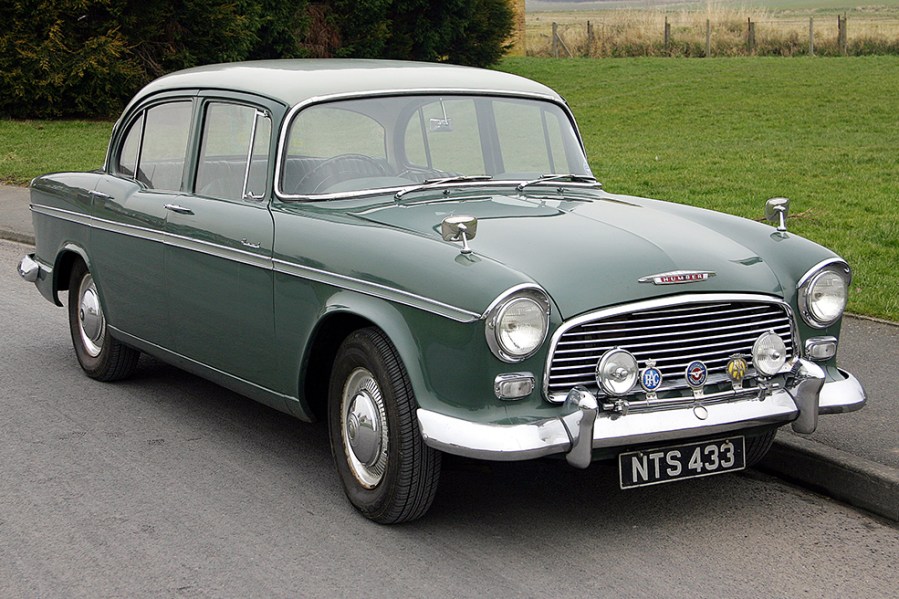
Humber Hawk
Once the favoured marque of Royalty until Rolls-Royce courted favour, Humber introduced a brand new unitary constructed Hawk in 1957 with radically modern looking bodywork. A year later the all-new 2655cc six-cylinder powered Humber Super Snipe joined the line-up and both models were available as either a four-door saloon or a spacious five-door estate.
The Hawk was powered by a 2267cc four-cylinder engine and optional overdrive was offered across the range. Towards the end of the decade Rootes introduced the revised Series 1A Hawk and Series 2 Super Snipe now powered by a more responsive 2965cc engine.
1960 saw the introduction of the luxuriously equipped Super Snipe Series 3 and the following the Series 3 Hawk appeared on the scene. Further developments resulted with the introduction of the Series 4 Super Snipe in 1962, a model that would eventually morph into the Imperial, while the fourth generation Hawk carried on until 1967.
Although a Hawk or a Super Snipe is an usual choice that will certainly turn heads, the later models are regarded as being the better looking cars. Plenty of room inside the cabin and the estates are especially roomy. Definitely a long-distance classic cruiser if that’s what you’re after.
Although well built, these cars rusted as soon as they left the showroom, so survivors are rare and will need checking carefully for poor repairs and deep-seated corrosion. Engines and transmissions are long-lived but it’s worth noting that suspension parts aren’t interchangeable between the Hawk and Super Snipe.

